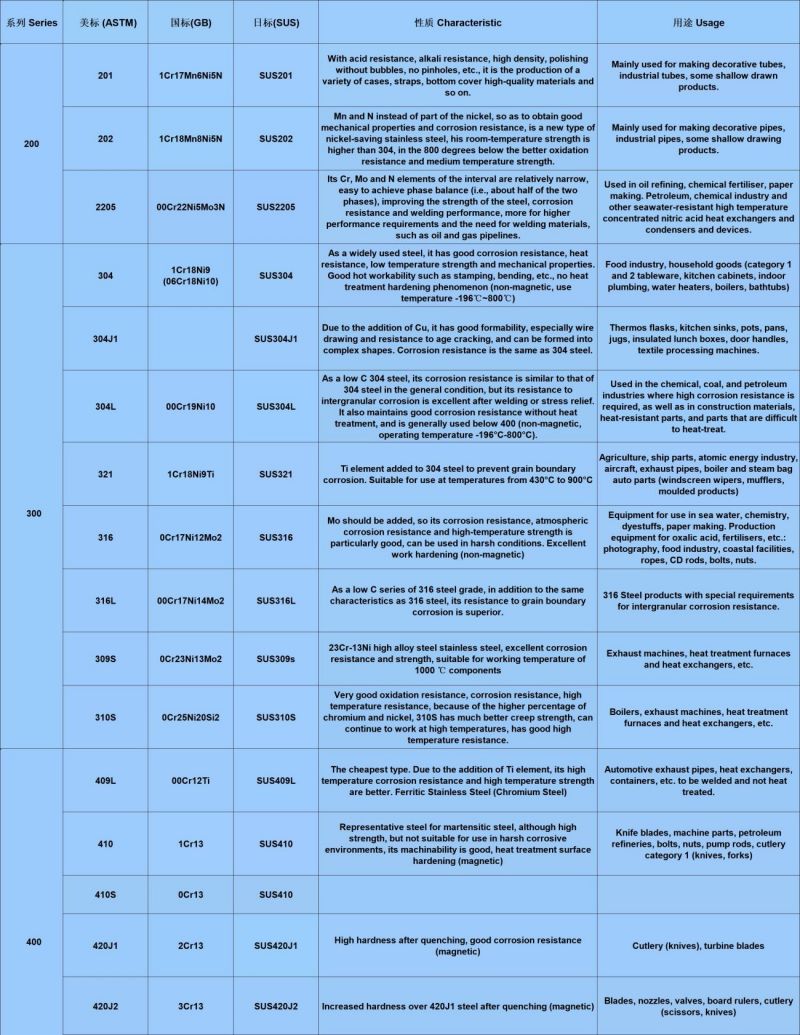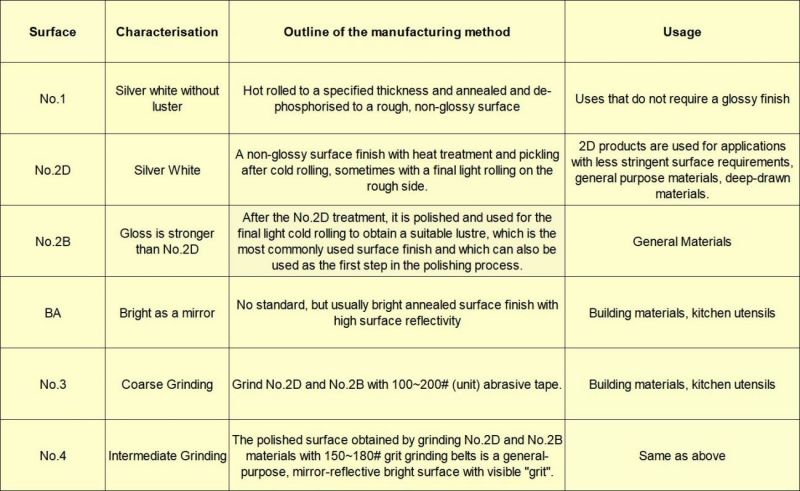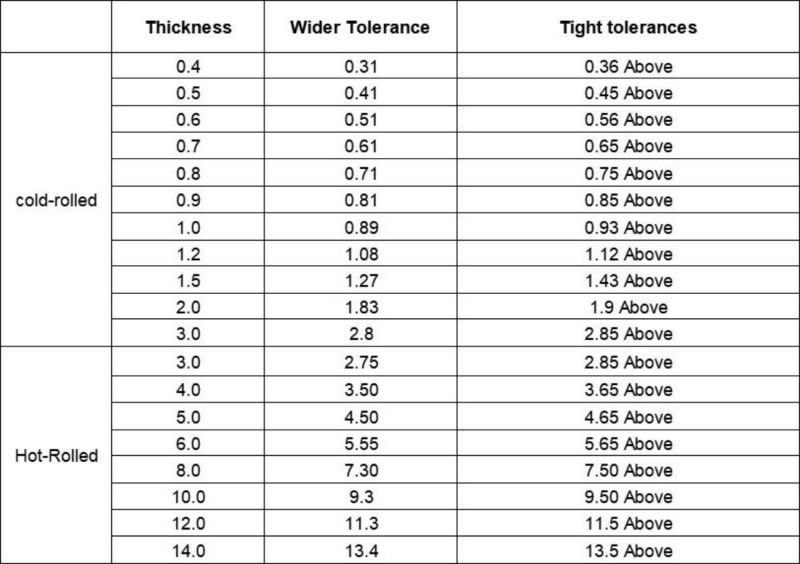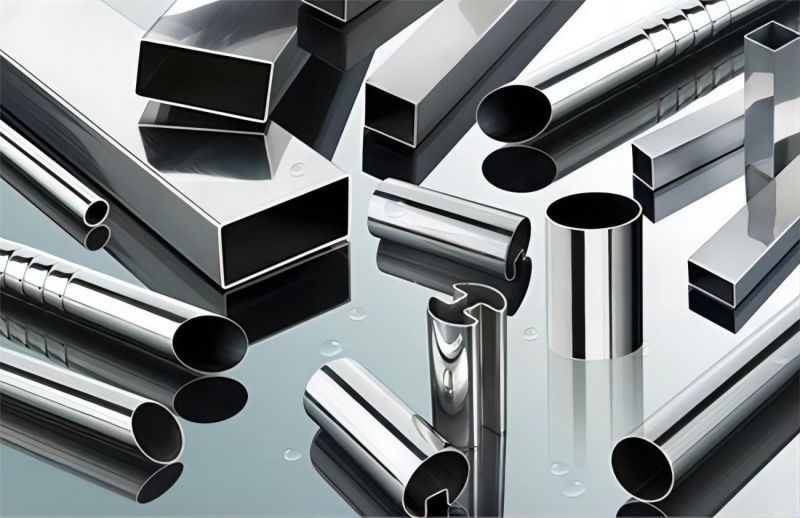Stainless steel is the abbreviation of stainless acid-resistant steel, air, steam, water and other weak corrosive media or stainless steel is known as stainless steel; and will be resistant to chemical corrosive media (acids, alkalis, salts, and other chemical impregnation) corrosion of the steel is called acid-resistant steel.
Stainless steel refers to air, steam, water and other weak corrosive media and acids, alkalis, salts and other chemical corrosive media corrosion of steel, also known as stainless acid-resistant steel. In practice, often weak corrosive media corrosion-resistant steel called stainless steel, and chemical media corrosion-resistant steel called acid-resistant steel. Because of the differences in the chemical composition of the two, the former is not necessarily resistant to chemical media corrosion, while the latter are generally stainless. The corrosion resistance of stainless steel depends on the alloying elements contained in the steel.
Common Classification
According to metallurgical organisation
Generally, according to the metallurgical organisation, common stainless steels are divided into three categories: austenitic stainless steels, ferritic stainless steels and martensitic stainless steels. On the basis of the basic metallurgical organisation of these three categories, duplex steels, precipitation hardening stainless steels and high alloy steels containing less than 50% iron are derived for specific needs and purposes.
1. Austenitic stainless steel
The matrix to face-centred cubic crystal structure of the austenitic organisation (CY phase) is dominated by non-magnetic, mainly through cold working to make it strengthened (and may lead to a certain degree of magnetism) of stainless steel. The American Iron and Steel Institute to 200 and 300 series of numerical labels, such as 304.
2. Ferritic stainless steel
Matrix to body-centred cubic crystal structure of ferrite organization (a phase) is dominant, magnetic, generally can not be hardened by heat treatment, but cold working can make it slightly strengthened stainless steel. American Iron and Steel Institute to 430 and 446 for the label.
3. Martensitic stainless steel
The matrix is martensitic organisation (body-centred cubic or cubic), magnetic, through heat treatment can adjust its mechanical properties of stainless steel. American Iron and Steel Institute to 410, 420, and 440 figures marked. Martensite has an austenitic organisation at high temperatures, which can be transformed into martensite (i.e. hardened) when cooled to room temperature at an appropriate rate.
4. Austenitic a ferrite (duplex) type stainless steel
The matrix has both austenitic and ferrite two-phase organisation, of which the content of the lesser phase matrix is generally greater than 15%, magnetic, can be strengthened by cold working of the stainless steel, 329 is a typical duplex stainless steel. Compared with austenitic stainless steel, duplex steel high strength, resistance to intergranular corrosion and chloride stress corrosion and pitting corrosion are significantly improved.
5. Precipitation hardening stainless steel
The matrix is austenitic or martensitic organisation, and can be hardened by precipitation hardening treatment to make it hardened stainless steel. American Iron and Steel Institute to 600 series of digital labels, such as 630, that is, 17-4PH.
In general, in addition to alloys, the corrosion resistance of austenitic stainless steel is superior, in a less corrosive environment, you can use ferritic stainless steel, in mildly corrosive environments, if the material is required to have high strength or high hardness, you can use martensitic stainless steel and precipitation hardening stainless steel.
Characteristics and uses

Surface process

Thickness distinction
1. Because the steel mill machinery in the rolling process, the rolls are heated by a slight deformation, resulting in rolling out the plate thickness deviation, generally thick in the middle of the two sides of the thin. In measuring the thickness of the plate state regulations should be measured in the middle of the plate head.
2. The reason for the tolerance is based on market and customer demand, generally divided into large and small tolerances.
V. Manufacturing, inspection requirements
1. Pipe plate
① spliced tube plate butt joints for 100% ray inspection or UT, qualified level: RT: Ⅱ UT: Ⅰ level;
② In addition to stainless steel, spliced pipe plate stress relief heat treatment;
③ tube plate hole bridge width deviation: according to the formula for calculating the width of the hole bridge: B = (S - d) - D1
Minimum width of the hole bridge: B = 1/2 (S - d) + C;
2. Tube box heat treatment:
Carbon steel, low alloy steel welded with a split-range partition of the pipe box, as well as the pipe box of the lateral openings more than 1/3 of the inner diameter of the cylinder pipe box, in the application of welding for stress relief heat treatment, flange and partition sealing surface should be processed after heat treatment.
3. Pressure test
When the shell process design pressure is lower than the tube process pressure, in order to check the quality of the heat exchanger tube and tube plate connections
① Shell program pressure to increase the test pressure with the pipe program consistent with the hydraulic test, to check whether the leakage of pipe joints. (However, it is necessary to ensure that the primary film stress of the shell during the hydraulic test is ≤0.9ReLΦ)
② When the above method is not appropriate, the shell can be hydrostatic test according to the original pressure after passing, and then the shell for ammonia leakage test or halogen leakage test.

What kind of stainless steel is not easy to rust?
There are three main factors that affect the rusting of stainless steel:
1.The content of alloying elements. Generally speaking, the content of chromium in 10.5% steel is not easy to rust. The higher the content of chromium and nickel corrosion resistance is better, such as 304 material nickel content of 85 ~ 10%, chromium content of 18% ~ 20%, such stainless steel in general is not rust.
2. The smelting process of the manufacturer will also affect the corrosion resistance of stainless steel. Smelting technology is good, advanced equipment, advanced technology, large stainless steel plant both in the control of alloying elements, the removal of impurities, billet cooling temperature control can be guaranteed, so the product quality is stable and reliable, good intrinsic quality, not easy to rust. On the contrary, some small steel plant equipment backward, backward technology, smelting process, impurities can not be removed, the production of products will inevitably rust.
3. External environment. The dry and ventilated environment is not easy to rust, while the air humidity, continuous rainy weather, or air containing acidity and alkalinity of the environment is easy to rust. 304 material stainless steel, if the surrounding environment is too poor is also rusty.
Stainless steel rust spots how to deal with?
1.Chemical method
With pickling paste or spray to assist its rusted parts to repassivate the formation of chromium oxide film to restore its corrosion resistance, after pickling, in order to remove all the pollutants and acid residues, it is very important to carry out a proper rinse with water. After everything is processed and re-polished with polishing equipment, it can be closed with polishing wax. For local slight rust spots can also be used 1:1 petrol, oil mixture with a clean rag to wipe off the rust spots can be.
2. Mechanical methods
Sandblasting cleaning, cleaning with glass or ceramic particles blasting, obliteration, brushing and polishing. Mechanical methods have the potential to wipe away contamination caused by previously removed materials, polishing materials or obliterated materials. All kinds of contamination, especially foreign iron particles, can be a source of corrosion, especially in humid environments. Therefore, mechanically cleaned surfaces should preferably be formally cleaned under dry conditions. The use of mechanical methods only cleans its surface and does not change the corrosion resistance of the material itself. Therefore, it is recommended to re-polish the surface with polishing equipment and close it with polishing wax after mechanical cleaning.
Instrumentation commonly used stainless steel grades and properties
1.304 stainless steel. It is one of the austenitic stainless steels with large application and widest use, suitable for manufacturing deep-drawn moulding parts and acid pipelines, containers, structural parts, various types of instrument bodies, etc. It can also manufacture non-magnetic, low-temperature equipment and parts.
2.304L stainless steel. In order to solve the Cr23C6 precipitation caused by 304 stainless steel in some conditions there is a serious tendency to intergranular corrosion and the development of ultra-low carbon austenitic stainless steel, its sensitised state of intergranular corrosion resistance is significantly better than 304 stainless steel. In addition to slightly lower strength, other properties with 321 stainless steel, mainly used for corrosion-resistant equipment and components can not be welded solution treatment, can be used for the manufacture of various types of instrumentation body.
3.304H stainless steel. 304 stainless steel internal branch, carbon mass fraction in 0.04% ~ 0.10%, high temperature performance is better than 304 stainless steel.
4.316 stainless steel. In 10Cr18Ni12 steel based on the addition of molybdenum, so that the steel has good resistance to reducing media and pitting corrosion resistance. In seawater and other media, corrosion resistance is better than 304 stainless steel, mainly used for pitting corrosion resistant materials.
5.316L stainless steel. Ultra-low carbon steel, with good resistance to sensitised intergranular corrosion, suitable for the manufacture of thick cross-section size of welded parts and equipment, such as petrochemical equipment in the corrosion-resistant materials.
6.316H stainless steel. internal branch of 316 stainless steel, carbon mass fraction of 0.04%-0.10%, high temperature performance is better than 316 stainless steel.
7.317 stainless steel. Pitting corrosion resistance and creep resistance is better than 316L stainless steel, used in the manufacture of petrochemical and organic acid corrosion resistant equipment.
8.321 stainless steel. Titanium stabilised austenitic stainless steel, adding titanium to improve intergranular corrosion resistance, and has good high temperature mechanical properties, can be replaced by ultra-low carbon austenitic stainless steel. In addition to high temperature or hydrogen corrosion resistance and other special occasions, the general situation is not recommended.
9.347 stainless steel. Niobium-stabilized austenitic stainless steel, niobium added to improve resistance to intergranular corrosion, corrosion resistance in acid, alkali, salt and other corrosive media with 321 stainless steel, good welding performance, can be used as corrosion-resistant materials and heat-resistant steel used mainly for thermal power, petrochemical fields, such as the production of containers, pipelines, heat exchangers, shafts, industrial furnaces in the furnace tube and furnace tube thermometer and so on.
10.904L stainless steel. Super complete austenitic stainless steel, a super austenitic stainless steel invented by Finland Otto Kemp, its nickel mass fraction of 24% to 26%, carbon mass fraction of less than 0.02%, excellent corrosion resistance, in the non-oxidising acids such as sulfuric, acetic, formic and phosphoric acid has very good corrosion resistance, and at the same time has a good resistance to crevice corrosion and resistance to stress corrosion properties. It is suitable for various concentrations of sulphuric acid below 70℃, and has good corrosion resistance to acetic acid and mixed acid of formic acid and acetic acid of any concentration and any temperature under normal pressure. The original standard ASMESB-625 attributes it to nickel-based alloys, and the new standard attributes it to stainless steel. China only approximate grade 015Cr19Ni26Mo5Cu2 steel, a few European instrument manufacturers of key materials using 904L stainless steel, such as E + H's mass flowmeter measuring tube is the use of 904L stainless steel, Rolex watch case is also used 904L stainless steel.
11.440C stainless steel. Martensitic stainless steel, hardenable stainless steel, stainless steel in the highest hardness, hardness HRC57. Mainly used in the production of nozzles, bearings, valves, valve spools, valve seats, sleeves, valve stems, etc..
12.17-4PH stainless steel. Martensitic precipitation hardening stainless steel, hardness HRC44, with high strength, hardness and corrosion resistance, can not be used for temperatures higher than 300 ℃. It has good corrosion resistance to both atmospheric and dilute acids or salts, and its corrosion resistance is the same as that of 304 stainless steel and 430 stainless steel, which is used in the manufacture of offshore platforms, turbine blades, spools, seats, sleeves and stems of valves.
In the instrumentation profession, combined with the generality and cost issues, the conventional austenitic stainless steel selection order is 304-304L-316-316L-317-321-347-904L stainless steel, of which 317 is less commonly used, 321 is not recommended, 347 is used for high-temperature corrosion, 904L is only the default material of some components of individual manufacturers, the design will not generally take the initiative to select the 904L.
In the instrumentation design selection, there will usually be instrumentation materials and pipe materials are different occasions, especially in high-temperature conditions, we must pay special attention to the selection of instrumentation materials to meet the process equipment or pipeline design temperature and design pressure, such as high-temperature chrome molybdenum steel pipeline, while the instrumentation to choose a stainless steel, then it is very likely to be a problem, you must go to consult the relevant material temperature and pressure gauge.
In the instrument design selection, often encountered a variety of different systems, series, grades of stainless steel, selection should be based on the specific process media, temperature, pressure, stressed parts, corrosion and cost and other perspectives.
Post time: Oct-11-2023

